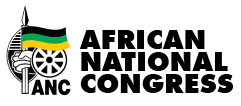aNC History
A brief history of the African National Congress
Our struggle for freedom has a long history. It goes back to the days when the African people fought spear in hand against the British and Boer colonisers. The ANC has kept this spirit of resistance alive! Over the last 80 years the ANC has brought together millions in the struggle for liberation. Together we have fought for our land, against low wages, high rents and the dompas. We have fought against bantu education, and for the right to vote for a government of our choice. This history is about our struggle for freedom and justice. It tells the story of the ANC
- 1860 – 1900s
The African Kingdoms
White settlers from Holland first came to South Africa in 1652. many bitter struggles were fought over land and cattle. Although the African kingdoms lost land and cattle they were still independent some 200 years later.
But in the 1860s Britain brought large armies with horses, modern rifles and cannons, to take control of South Africa. The Xhosa who had fought nine wars of resistance against the colonisers, were finally defeated in 1878, after more than 100 years of warfare.
Led by Cetshwayo, the Zulu brought a crushing defeat on the British army at Isandhlwana in 1878, but were finally defeated at Ulundi by British reinforcements. Soon afterwards the British attacked and defeated the Pedi who had also remained independent for many years.
Leaders like Sukhukhune, Sandile and Cetshwayo were captured and imprisoned or killed. By 1900 Britain had broken the power of the African kingdoms and they then fell under the control of the colonial government. In 1910, Britain handed over this control to the Boer and British settlers themselves, when it gave them independence. The union of South Africa was formed with a government that recognised only the rights of white people and denied rights to blacks.
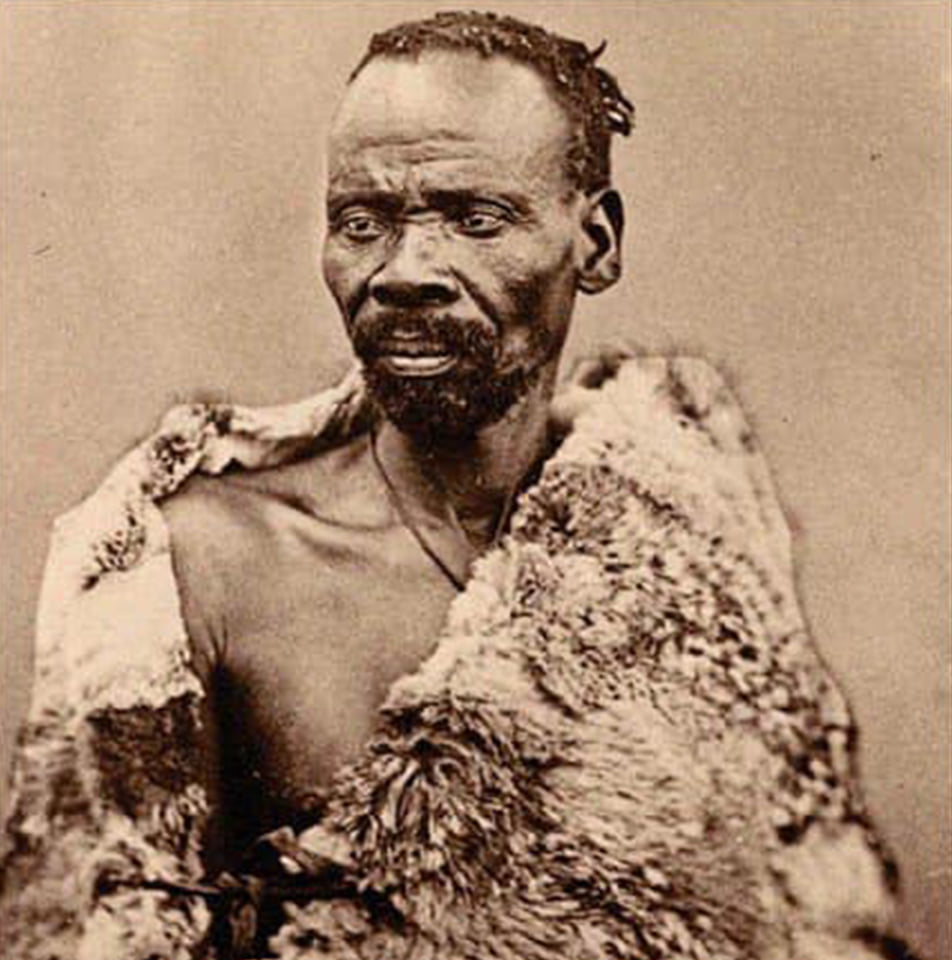
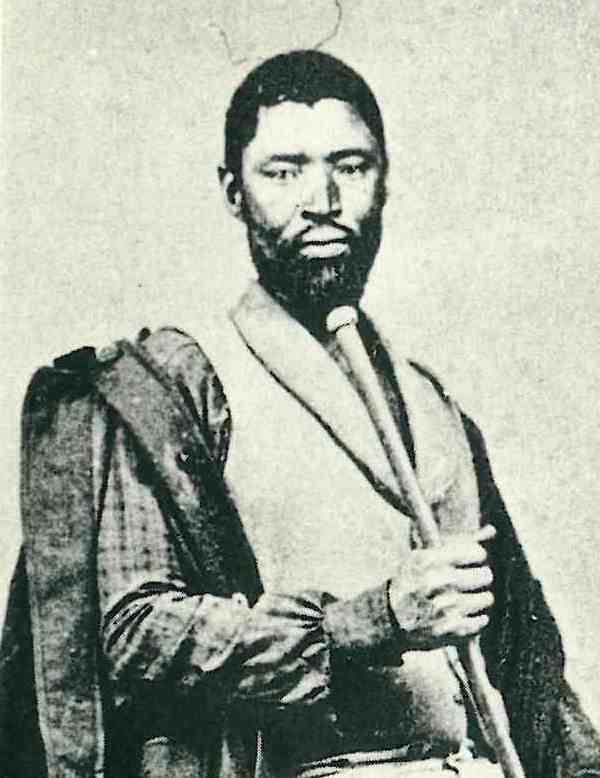
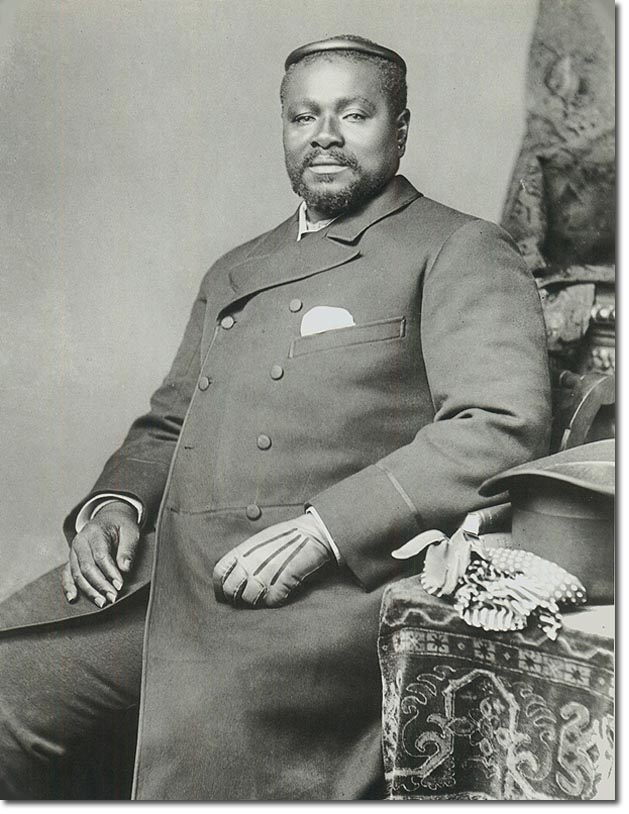
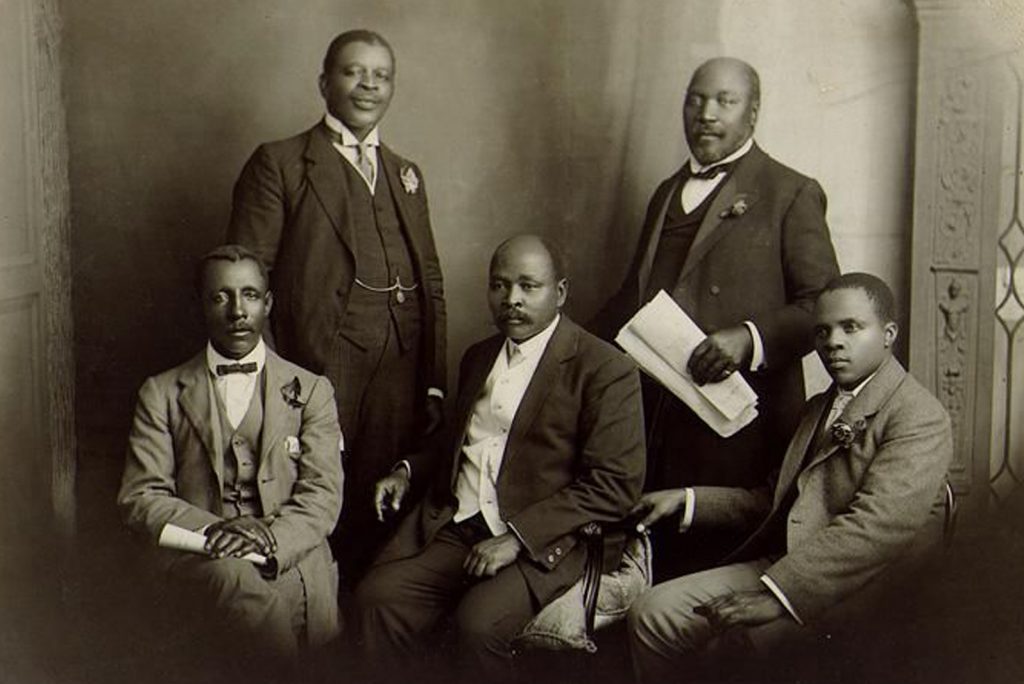
- 1912s
The ANC Is Formed
The wars of resistance ended with the defeat of Bambata’s rebellion. Africans had to find new ways to fight for their land and their freedom. In 1911, Pixley ka Isaka Seme called on Africans to forget the differences of the past and unite together in one national organisation. He said: “We are one people. these divisions, these jealousies, are the cause of all our woes today.”
On January 8th 1912, chiefs, representatives of people’s and church organisations, and other prominent individuals gathered in Bloemfontein and formed the African National Congress. The ANC declared its aim to bring all Africans together as one people to defend their rights and freedoms.
The ANC was formed at a time when South Africa was changing very fast. Diamonds had been discovered in 1867 and gold in 1886. Mine bosses wanted large numbers of people to work for them in the mines. Laws and taxes were designed to force people to leave their land. The most severe law was the 1913 land Act, which prevented africans from buying, renting or using land, except in the reserves.
Many communities or families immediately lost their land because of the Land Act. for millions of other black people it became very difficult to live off the land. The Land Act caused overcrowding, land hunger, poverty and starvation.
- 1913s
Working For A Wage
The Land Act and other laws and taxes forced people to seek work on the mines and on the white farms. While some black people settled in cities like Johannesburg, most workers were migrants. They travelled to the mines to work and returned home to the rural areas with part of their wages, usually once a year.
But Africans were not free to move as they pleased. Passes controlled their movements and made sure they worked either on the mines or on the farms. The pass laws also stopped Africans from leaving their jobs or striking. In 1919 the ANC in Transvaal led a campaign against the passes. The ANC also supported the militant strike by African mineworkers in 1920.
However, some ANC leaders disagreed with militant actions such as strikes and protests. They argued that the ANC should achieve its aims by persuasion, for example, by appealing to Britain. but the appeals of delegations who visited Britain in 1914 to protest the Land Act and again in 1919 to ask Britain to recognise African rights, were ignored.
This careful approach meant that the ANC was not very active in the 1920s. The Industrial and Commercial Workers Union (ICU) – a general union formed in 1919 – was the most active and popular organisation in rural and urban areas, at this time. The union won some major victories for its workers through militant actions. However, the ICU could not sustain itself, and in the late 1920s it collapsed.
Socialist organisations also began to organise black workers in the 1920s. The International Socialist League together with other socialist organisations formed the Communist Party in 1921. The Communist Party became the first non-racial political organisation in South Africa.
During the 1920s government policies became harsher and more racist. A colour-bar was established to stop blacks from holding semi-skilled jobs in some industries. It also meant that black workers were paid lower wages for unskilled work.
J.T. Gumede, was elected President of the ANC in 1927. He tried to revitalise the ANC in order to fight these racist policies. Gumede thought that the communists could make a contribution to this struggle and wanted the ANC to co-operate with them. However, in 1930, Gumede was voted out of office and the ANC became inactive in the 1930s undergo conservative leadership.
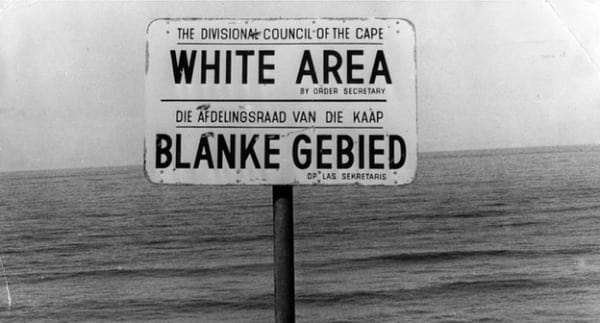
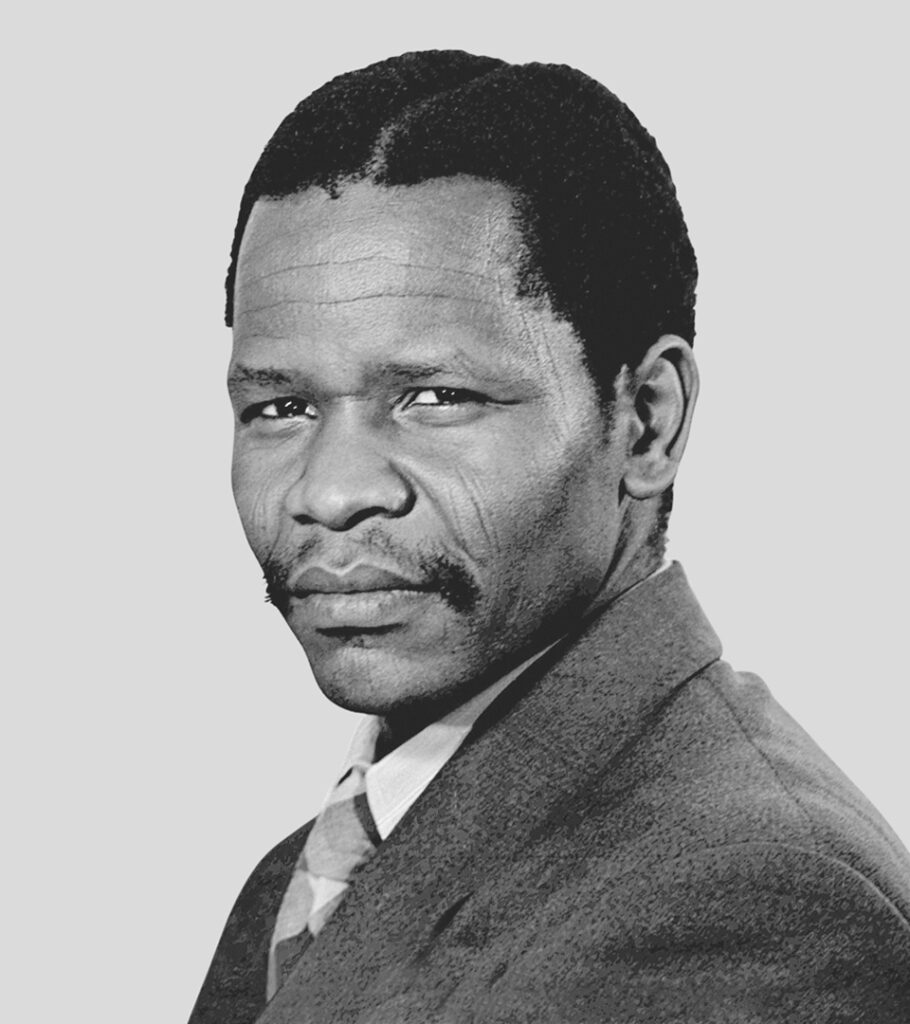
- 1940s
The ANC Gains New Life
The ANC was boosted with new life and energy in the 1940s, which changed it from the careful organisation it was in the 1930s to the mass movement it was to become in the 1950s.
Increased attacks on the rights of black people and the rise of extreme Afrikaner nationalism created the need for a more militant response from the ANC. Harsher racism also brought greater co-operation between the organisations of Africans, Coloureds and Indians. In 1947, the ANC and the Indian Congresses signed a pact stating full support for one another`s campaigns.
In 1944 the ANC Youth League was formed. The young leaders of the Youth League – among them Nelson Mandela, Walter Sisulu and Oliver Tambo – based their ideas on African nationalism. They believed Africans would be freed only by their own efforts. The Youth League aimed to involve the masses of people in militant struggles.
Many more people moved to the cities in the 1940s to work in new factories and industries. They began to from their own community organisations – such as the Squatter`s Movement – and trade unions. The militant ideas of the Youth League quickly found support among the new population of the cities. The Youth League drew up a Programme of Action calling for strikes, boycotts and defiance. It was adopted by the ANC in 1949, the year after the National party came to power. The Programme of Action led to the Defiance Campaign of the 1950s.
- 1950s
A Mass Movement Is Born
The Defiance Campaign was the beginning of a mass movement of resistance to apartheid. apartheid aimed to separate the different race groups completely through laws like the Population Registration Act, Group areas Act and Bantu Education Act, and through stricter pass laws and forced removals.
“Non-Europeans” walked through “Europeans Only” entrances and demanded service at “White`s Only” counters of post offices. Africans broke the pass laws and Indian, Coloured and White “volunteers” entered African townships without permission.
The success of the Defiance Campaign encouraged further campaigns against apartheid laws, like the Group Areas Act and the Bantu Education Act.
The government tried to stop the Defiance Campaign by banning it`s leaders and passing new laws to prevent public disobedience. but the campaign had already made huge gains. It brought closer co-operation between the ANC and the SA Indian Congress, swelled their membership and also led to the formation of new organisations; the SA Coloured people`s Organisation (SACPO) and the Congress of Democrats (COD), an organisation of white democrats.
These organisations, together with the SA Congress of Trade Unions (SACTU) formed the Congress Alliance.
The Congress Alliance came together to organise the Congress of the people – a conference of all the people of South Africa – which presented people`s demands for the kind of South Africa they wanted.
The demands called for the people to govern and for the land to be shared by those who work it. They called for houses, work, security and for free and equal education. These demands were drawn together into the Freedom Charter which was adopted at the Congress of the People at Kliptown on the 26th June 1955.
The government claimed that the Freedom Charter was a communist document. Communism had been banned by the government in 1950, so they arrested ANC and Congress leaders and brought them to trial in the famous Trason Trial. They also tried to prove that the ANC and its allies had a policy of violence and planned to overthrown the state.
In 1955 the government announced that women must carry passes. A huge campaign was mounted by women, countrywide. Women also led a militant campaign against municipal beerhalls. According to the law it was illegal for women to brew traditional beer. Police raided homes and destroyed home brewed liquor so that men would use municipal beerhalls. In response, women attacked the beerhalls and destroyed equipment and buildings. The women also organised a highly successful boycott of the beerhall.
There were many other community struggles in the 1950s. Resistance in the rural areas reached new heights. In many areas campaigns were led by the ANC against passes for women, forced removals and the Bantu Authorities Act. The Bantu Authorities Act gave the white government the power to remove chiefs they considered troublesome and replace them with those who would collaborate with the racist system.
The collaboration of chiefs with government officials was one of the causes of the Pondoland Revolt, a major event in the resistance by rural people. The Pondos also demanded representation in parliament, lower taxes and an end to Bantu Education.
The struggles of the 1950s brought blacks and whites together on a much greater scale in the fight for justice and democracy. The Congress Alliance was an expression of the ANC`s policy of non-racialism. This was expressed in the Freedom Charter which declared that South Africa belongs to all who live in it.
But not everyone in the ANC agreed with the policy of non- racialism. A small minority of members who called themselves Africanists, opposed the Freedom Charter. They objected to the ANC`s growing co-operation with whites and Indians, who they described as foreigners. They were also suspicious of communists who, they felt, brought a foreign ideology into the struggle.
The differences between the Africanists and those in the ANC who supported non-racialism, could not be overcome. In 1959 the Africanists broke away and formed the Pan Africanist Congress (PAC). Anti-pass campaigns were taken up by both the ANC and the PAC in 1960.
The PAC campaign began on the 21st March. People were asked to leave their passes at home and gather at police stations to be arrested. People gathered in large numbers at Sharpville in the Vaal and at Nyanga and Langa near Cape Town. At Sharpville the police opened fire on the unarmed and peaceful crowd, killing 69 and wounding 186.
The massacre of peaceful protestors at Sharpville brought a decade of peaceful protest to an end. On 30 March 1960, ten days after the Sharpville massacre, the government banned the ANC and the PAC. They declared a state of emergency and arrested thousands of Congress and PAC activists.
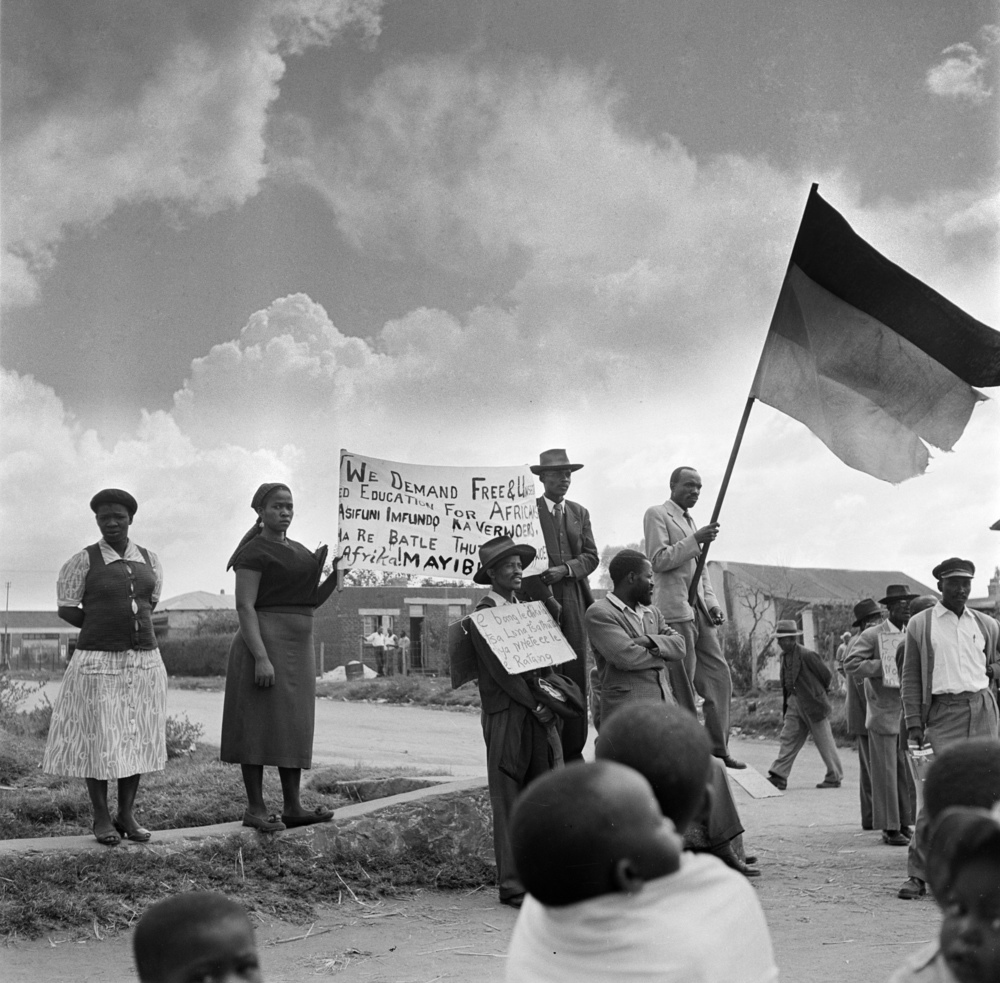
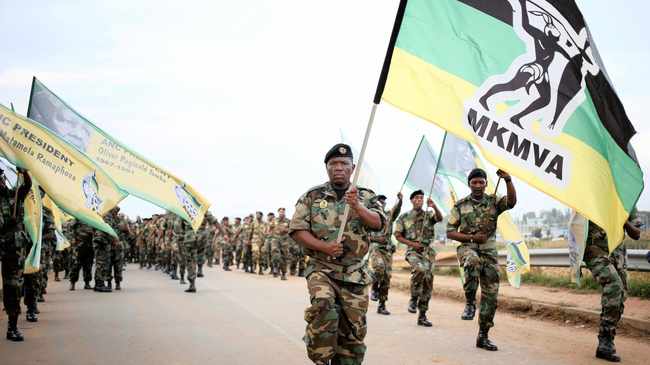
- 1960s
The Armed Struggle Begins
The ANC took up arms against the South African Government in 1961. The massacre of peaceful protestors and the subsequent banning of the ANC made it clear that peaceful protest alone would not force the regime to change. The ANC went underground and continued to organise secretly. Umkhonto we Sizwe (MK) was formed to “hit back by all means within our power in defence of our people, our future and our freedom”
In 18 months MK carried out 200 acts of sabotage. But the underground organisation was no match for the regime, which began to use even harsher methods of repression. Laws were passed to make death the penalty for sabotage and to allow police to detain people for 90 days without trial. in 1963, police raided the secret headquarters of MK, arresting the leadership. This led to the Rivonia Trial where the leaders of MK were charged with attempting to cause a violent revolution.
Some ANC leaders – among them Oliver Tambo and Joe Slovo avoided arrest and left the country. Other ANC members left to undergo military training.
After the Rivonia Trial, the underground structures of the ANC in the country were all but destroyed. The ANC was faced with the question of how to bring trained soldiers back into the country to continue the struggle. However, South Africa was surrounded by countries that were very hostile to the ANC. Rhodesia, Angola and Mozambique were all controlled by colonial governments that supported the regime. MK would first have to make its way through those countries before it could reach home ground.
In 1967, MK began a joint campaign with Zapu, a people`s army fighting for the liberation of Zimbabwe. They aimed to find a route into South Africa by first crossing the Zambezi River from Zambia and into Zimbabwe, then marching across Zimbabwe through Wankie Game reserve, and crossing the Limpopo River into South Africa. While the Wankie Campaign gave MK cadres important experience in combat, it was clear that MK would have to find other ways of getting into the country. The ANC consultative conference at Morogoro, Tanzania in 1969 looked for solutions to this problem.
The Morogoro Conference called for an all-round struggle. Both armed struggle and mass political struggle had to be used to defeat the enemy. But the armed struggle and the revival of mass struggle depended on building ANC underground structures within the country. A fourth aspect of the all-round struggle was the campaign for international support and assistance from the rest of the world. These four aspects were often called the four pillars of struggle. The non-racial character of the ANC was further consolidated by the opening up of the ANC membership to non-Africans.
- 1970s
The Struggle for People's Power
During the 1960s, as a result of the banning of the liberation movement, there were few signs of resistance. The apartheid system grew stronger and extended its control over all aspects of people`s lives. But, despite the lull, people were not prepared to accept the hardships and oppression of apartheid. In the 1970s workers and students fought back against the system. their struggles changed the face of South Africa.
From about 1970 prices began to rise sharply, making it even more difficult for workers to survive on low wages. Spontaneous strikes resulted: workers walked off the job demanding wage increases. The strike began in Durban in 1973 and later spread to other parts of the country.
Student anger and grievances against bantu education exploded in June 1976. Tens of thousands of high school students took to the streets to protest against compulsory use of Afrikaans at schools. Police opened fire on marching students, killing thirteen year old Hector Petersen and at least three others. This began an uprising that spread to other parts of the country leaving over 1,000 dead, most of whom were killed by the police.
Many Soweto student leaders were influenced by the ideas of black consciousness. The South African Students Movement (SASM), one of the first organisations of black high school students, played an important role in the 1976 uprising. There were also small groups of student activists who were linked to old ANC members and the ANC underground. ANC underground structures issued pamphlets calling on the community to support students and linking the student struggle to the struggle for national liberation.
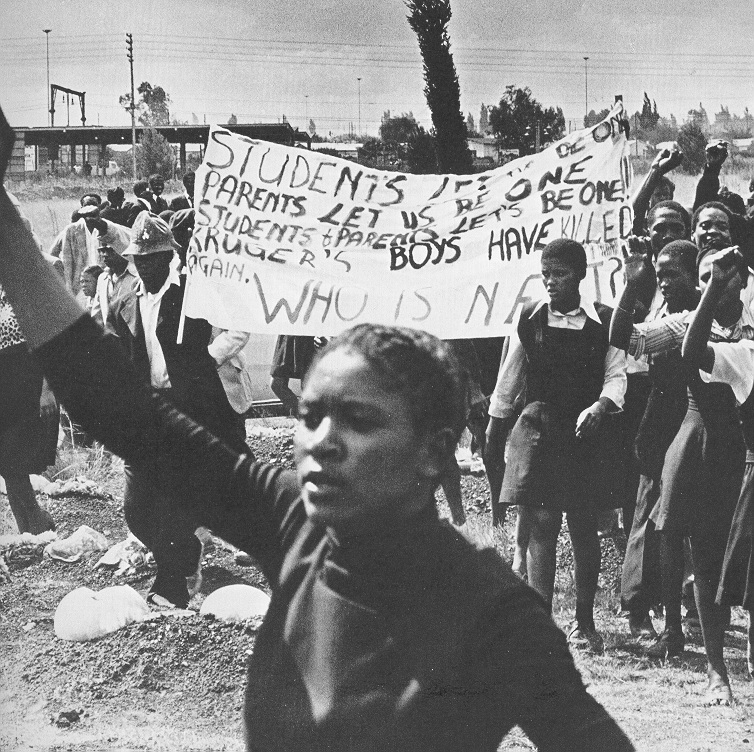
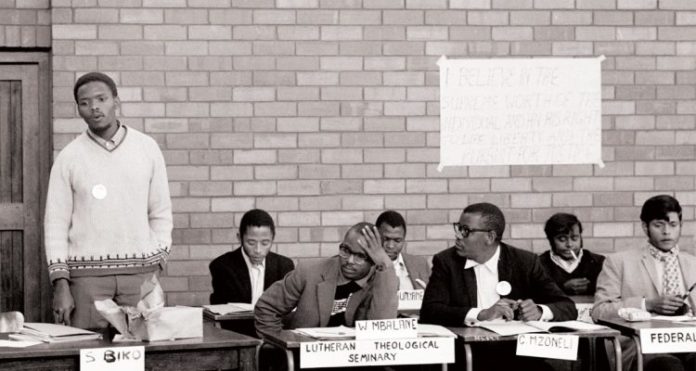
- 1980s
The Struggle For People’s Power
In the 1980s, people took the liberation struggle to new heights. In the workplace, in the community and in the schools, the people aimed to take control of their situation. All areas of life became areas of political struggle. These strugglers were linked to the demand for political power.
Thousands of youths flooded the ranks of MK after the 1976 uprising. The violence used by the security forces to quell the uprising made the youths determined to come back and fight. The 1976 uprising also led the regime to change its strategy. For the first time reforms were introduced to apartheid. These aimed to win some support from the black community, but without making substantial changes. at the same time the military was greatly strengthened. They could use greater force and repression against people and organisations who ere considered revolutionary. Through the State Security Council and a network of other structures, the military also gained control over the most important decisions of government. This combination of reform and repression, the NP government described as winning the hearts and minds of black South Africans.
However, the reforms proposed by the government, such as the Tricameral Parliament and Black Local Authorities in African Townships, were totally rejected and only gave rise to greater resistance.
In the 1980s community organisations such as civics, students and youth organisations and women`s structures began to spring up all over South Africa. This was a rebirth of the mass Congress movement and led to the formation of the United Democratic Front.
One of the biggest organisations formed at this time was the Congress of South African Students (COSAS) with branches in towns and cities throughout South Africa. In many cases civic organisations developed out of parent – student committees which had been formed to support education struggles. Massive national school boycotts rocked the townships in 1980 and again in 1984/5.
Worker organisation and power also took a major step forward with the formation of the Congress of South African Trade Unions (Cosatu) in 1985. Cosatu drew together independent unions that had begun to grow in the seventies. Cosatu committed itself to advancing the struggles of workers both in the workplace and in the community. 1987 saw the highest number of strikes ever, including a strike by over 300,000 mineworkers.
In 1985, the ANC called on township residents to make townships ungovernable by destroying the Black Local Authorities. Councillors and police were called on to resign. Municipal buildings and homes of collaborators were attacked. As the administrative system broke down, people established their own democratic structures to run the community, including street committees and people`s courts. An atmosphere of mass insurrection prevailed in many townships and rural towns across the country during 1985 and 1986. Mass struggles and the armed struggle began to support one another. Troops and police who had moved into the townships at the end of 1984 engaged in running battles with youths – armed with stones and petrol bombs – in an effort to re-establish control.
As resistance mounted, the regime became more vicious. A state of emergency was declared over many parts of the country in July 1985. It lasted for six months, and then in June 1986 a national emergency was declared, that lasted until 1990. The states of emergency were used to detain over 300,000 people, among them children, and to ban the UDF and its affiliates from all activity. Cosatu was restricted from political activity.
Secret government units killed activists and bombed their homes. The South African Defence Force (SADF) led raids into neighbouring countries to destroy ANC bases. These raids were part of a general strategy to destabilise neighbouring governments that offered the ANC support. The South African government gave extensive support to bandit organisations like Renamo in Mozambique and Unita in Angola.
The struggle for people`s power in the 1980s shook the foundations of the bantustan system. The regime tried desperately to save it by supporting vigilante groups and suppressing popular resistance.
In Natal, the struggle for people`s power was met with violence by Inkatha warlords who were opposed to the growth of community organisations. civic and youth organisations and Cosatu were opposed to the undemocratic practices of Inkatha and its ties to the KwaZulu government. The conflict has led to a bitter war in Natal, where thousands have lost their lives. Today there is evidence that the apartheid government gave money to Inkatha to fight the ANC, and that the South African Police and the KwaZulu Police have played active roles in this war.
9. The ANC is Unbanned
In spite of detentions and bannings, the mass movement took to the city streets defiantly with the ANC and SACP flags and banners. The people proclaimed the ANC unbanned. In February 1990, the regime was forced to unban the ANC and other organisations.
By unbanning the ANC, the regime indicated for the first time, that it might be prepared to try and solve South Africa`s problems peacefully, through negotiations.
After its unbanning the ANC began to establish branch and regional structures of its members. Regional and national membership was elected. At its national conference inside the country since 1959, the ANC restated its aim to unite South Africa and bring the country to free and democratic elections.
At the 1991 National Conference of the ANC Nelson Mandela was elected President. Oliver Tambo, who served as President from 1969 to 1991 was elected National Chairperson. Tambo died in April 1993 after serving the ANC his entire adult life.
The negotiations initiated by the ANC resulted in the holding of historic first elections based on one person one vote in April 1994.
The ANC won these first historic elections with a vast majority. 62,6% of the more than 22 million votes cast were in favour of the ANC.
On the 10th of May 1994 Nelson Mandela was inaugurated as the President of South Africa. The ANC has been in power ever since
